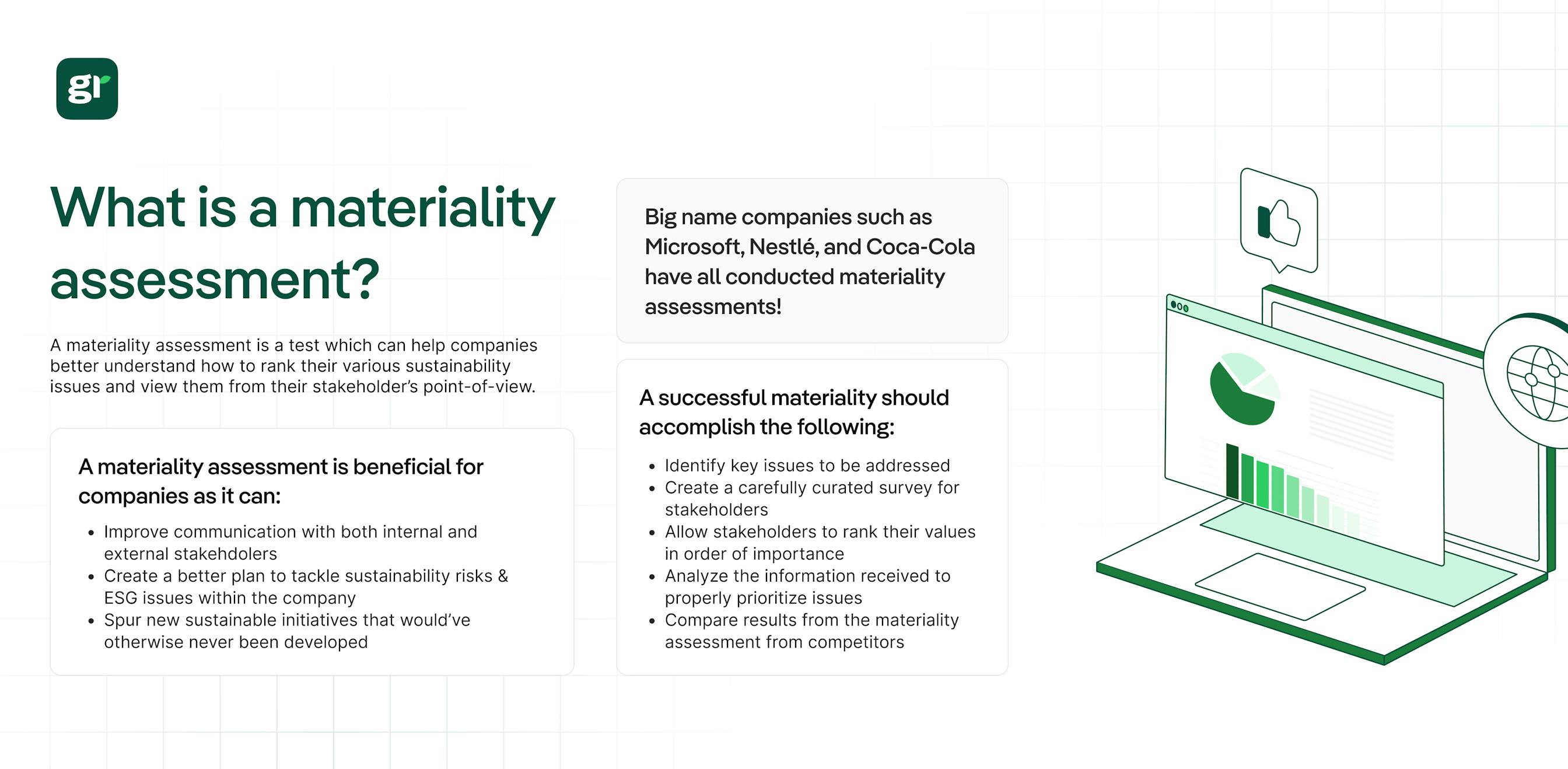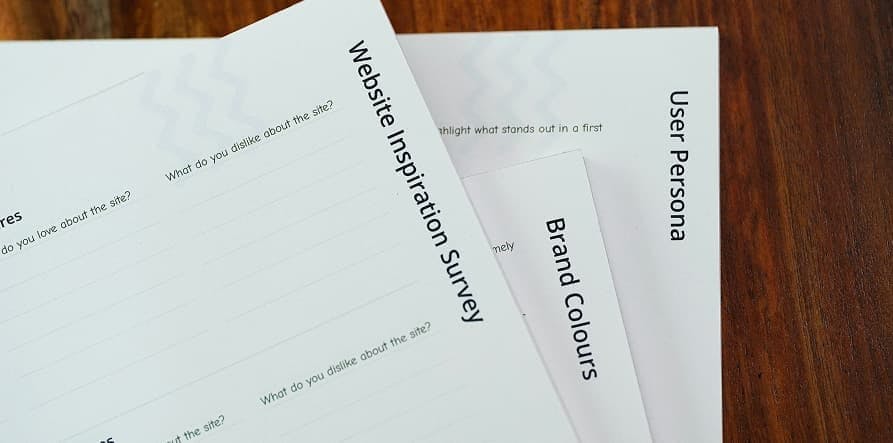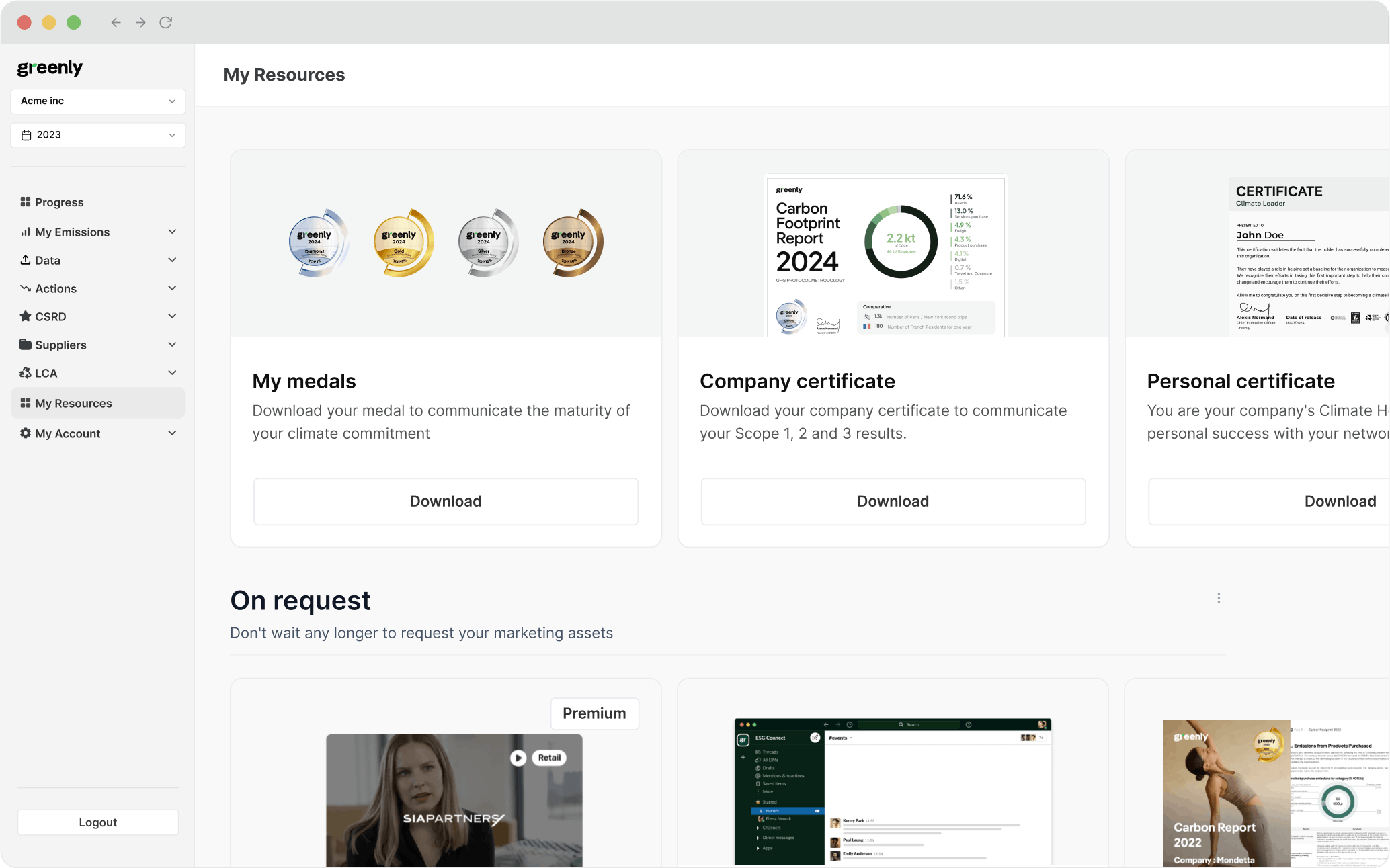
Impacts, Risks, and Opportunities (IRO) for CSRD Reporting
In this article, we’ll break down what IROs are, how to identify and assess them, and what CSRD requires in terms of disclosure.
ESG / CSR
Industries



Environmental compliance experts recognise it can be difficult to remember all of the different assessments that can be made in order to ensure that your business is keeping up-to-date with the many tests that can be done to see how well your company is adhering to environmental measures – with one of those being by conducting a materiality assessment.
Materiality assessments can help companies to better understand their roadblocks towards achieving sustainability, as it can help companies seeking to improve upon their sustainability efforts.
In this article, we’ll examine materiality assessments through an evidence-based lens, evaluate their effectiveness for corporate sustainability initiatives, and provide actionable insights based on industry best practices.
However, the main purpose of a materiality assessment is to define the social and environmental areas that are most valuable and pivotal to your company, investors, and stakeholders.
According to the Global Reporting Initiative (GRI), a leading authority in sustainability reporting standards, the term ‘materiality' refers to topics that have a significant direct or indirect impact on a company's ability to adhere to social and environmental needs, create or erode economic value, engage stakeholders, and enhance overall business value.
Think of when you take an anonymous poll at school to vote for something in order to get the most accurate results and discover other viewpoints you may not have otherwise found if the poll wasn’t anonymous. A materiality assessment can help to reveal the same issues and discrepancies within a company’s sustainability model and business strategy.
Conducting assessments like materiality assessments are on the rise in the midst of the global movement towards greater transparency and sustainability. In fact, 96% of the world's top 250 companies has committed to reporting their sustainability issues in their environmental reports and disclosures.


However, just because materiality assessments are growing in popularity – doesn’t mean that they materiality assessment process can be completed easily.
The traditional way to conduct a materiality assessment is a long, drawn-out approach that doesn’t align with the fast-paced needs of many industries today: such as retail or fast-moving consumer goods – which face particular challenges due to extensive plastic usage and packaging concerns, creating significant sustainability hurdles that materiality assessments must address.

A materiality assessment is important because it can serve as the first stepping stone to help companies develop a better sustainability strategy – something that is becoming more imperative as the world transitions to becoming more climate aware.
A materiality assessment is also important because:
A materiality assessment is also often referred to as an “ESG materiality assessment” or a “sustainability materiality assessment” as it not only takes into account the sustainability models of the business, but the different environmental, social, and governance issues (ESG) that could be occurring throughout the company and keeping them from achieving economic and environmental success.
Not only is it becoming compulsory to adhere to sustainability protocols, but both peer-reviewed research and the GRI have shown that investors and companies are more likely to contribute to a product or service if they are dedicated towards environmental reform – such as by developing an ESG strategy, sharing sustainability goals, or even sharing a sustainability report.
This is important as it gives anyone with a direct or indirect impact on a business such as people, employees, and stakeholders engaged in the business, organisation, or product a chance to re-calibrate and reorganise their models to be more sustainable and be in accordance with other ESG values.
Large companies around the world routinely implement materiality assessments in order to realise which issues are having the greatest impact on their business, relevant stakeholders, and even their surrounding ecosystem.
Information regarding a company's actions are growing in interest to the public eye, with new rules such as the SEC disclosure rule in the U.S. and the Corporate Sustainability Reporting Directive (CSRD) in Europe demonstrate how stricter regulations regarding transparency are coming into play. Mechanisms like a materiality assessment can help companies be more prepared for future environmental regulations.
The table below will demonstrate the differences between the SEC and CSRD disclosures and their requirements regarding materiality:
| Criteria | SEC Climate Disclosure Rule | CSRD (Corporate Sustainability Reporting Directive) |
|---|---|---|
| Entities Required | Public companies, registered with the SEC | Large companies and listed SMEs within the EU |
| Materiality Definition | Climate-related risks that could impact a company’s financial performance (financial materiality) | Impacts on financial performance and on society/environment (includes both financial and ESG materiality) |
| Focus | Risks that affect the financial performance of the company, including physical and transition risks | Risks to the business from ESG factors, and impacts the company has on the environment and society |
| Reporting Requirements | Mandatory for public companies under the SEC’s climate disclosure rule, with a focus on material financial impacts | Mandatory for EU companies under CSRD, covering a broader range of ESG topics (environmental, social, governance) |
| Metrics & Indicators | Disclosure of metrics related to climate risks, such as GHG emissions (Scope 1, 2, 3), governance, and financial impacts | A broad range of sustainability metrics, including GHG emissions, biodiversity, social impact, and governance standards |
| Time Frame | Current and future financial risks posed by climate change | Requires reporting on both past and future impacts of ESG factors |
| Report Format | Companies must disclose climate risks in SEC filings, such as 10-K, 20-F | Requires structured digital reporting via the ESAP platform in compliance with ESRS (European Sustainability Reporting Standards) |
| Enforcement | Enforced by the SEC, with fines for non-compliance | Enforced by EU regulators, with penalties for non-compliance |
A thorough materiality assessment can reduce the research that needs to be done on behalf of a future investors or customer, and ensure that the company is dedicated towards sustainability and overall improvement.
Ultimately, a materiality assessment is important as it can propel a business or entity towards greater sustainability and re-engage the viewpoints of their stakeholders. Many companies are looking to implement the right process to improve their ESG and sustainability factors, and a materiality assessment can serve as a good first step towards fighting against global warming.

There are multiple benefits and drawbacks to conducting a materiality assessment, such as helping companies to identify their most significant material issues, sources of greenhouse gas emissions and improve an organisation's ability to tackle their current environmental impact.
However, a materiality assessment (specifically financial materiality) requires careful thought on how a company's choices may influence stakeholder decisions.
Here are the pros and cons of a materiality assessment broken down:
There are numerous benefits to conducting a materiality assessment, such as enhancing stakeholder engagement and drafting the ultimate visual representation of material topics and material ESG issues to focus on moving forward.
Here's a table further depicting the benefits of a materiality assessment:
| Benefit | Description |
|---|---|
| Improve Stakeholder Communication | As a materiality test requires several surveys and communication efforts to determine how material risks may impact your business in the long-term, a materiality assessment can help to facilitate better communication with your stakeholders moving forward. |
| Better Brand Reputation | Companies that choose to conduct a materiality assessment can directly demonstrate their commitment to environmental reform and to protect both internal and external stakeholders such as the surrounding community. |
| Risk Management | Mitigating climate-related risks is challenging, but a materiality assessment can help to reveal which ESG risks or other social or environmental priorities should be at the top of your company’s “to-do” list. |
| Inspire New Sustainable Ideas | A materiality assessment could help your company to develop new eco-friendly initiatives that never would’ve come to fruition without an ESG materiality assessment. |
A materiality assessment helps companies understand their environmental impacts, but a properly conducted materiality assessment will require businesses to go the extra mile to make their materiality assessment worth the effort.
However, on the flip side, while there are many benefits to be had for businesses that ensure to conduct a materiality assessment – moving forward with a materiality assessment can also present some challenges.

More companies than you may realise, including big name companies, have already conducted a materiality assessment – take a look by clicking on the drop down sections below:
Microsoft conducted a materiality assessment to ensure their sustainability efforts align with stakeholder expectations and business priorities. Their process involved identifying and validating key ESG issues through internal and external feedback.
Read more about Microsoft's reporting governance
Nestlé conducts a materiality assessment every two years to understand their ecological impact and improve stakeholder communication. They created the "Creating Shared Value" sustainability report based on the results of their materiality assessments to enhance accountability.
Read more about Nestlé's CSV Materiality
COP15 Biodiversity Summit: What You Need to Know
Coca-Cola's materiality assessment involved business leaders making contact with over 1,000 stakeholder groups. They integrated ESG issues and social needs into their business strategy, leading to initiatives like "World Without Waste" to address packaging waste.
Coca-Cola Sustainability Report
World Without Waste 2021 Report
Unlike other required regulations such as the SEC proposal rule, the CSRD, or the NFRD – a materiality assessment isn’t mandated to be completed by a company, and they will not face penalties for not completing a materiality assessment.
However, that being said – just because a materiality assessment has yet to become compulsory doesn't mean that companies should overlook their benefits.
According to sustainability reporting experts, companies that proactively conduct materiality assessments can benefit from competitive advantages such as:
Research from leading ESG rating agencies, such as MSCI, illustrates how businesses with comprehensive materiality processes typically score higher on sustainability metrics, potentially influencing investment decisions and customer loyalty.
In this sense, a materiality assessment is more comparable to other well-known environmental certifications such as an ISO certification or B Corp Certification – and while neither of these are required, they help to demonstrate that a company has high moral standards when it comes to their sustainability models and efforts to reduce their environmental impact.

The battle cards below will depict the differences between a materiality assessment and a double materiality assessment required under the CSRD:
A materiality assessment is conducted in a variety of ways, but one thing is pivotal and universal when it comes to a materiality assessment – and that’s getting a clear picture of what information the company conducting the materiality assessment is hoping to learn. This way, the materiality assessment can be conducted with the information the company is hoping to retrieve in mind.
Remember to ensure your senior management is involved in the materiality assessment process, as they can provide necessary resources beyond the basic steps needed such as internal data and financial impact to ensure all potential business units are covered in the materiality assessment.
After this imperative step, questions will be carefully drafted to adhere to the information the company is looking to learn. However, no matter how well drafted the questions are – the quality of information will be contingent on honest answers.
According to sustainability reporting standards like the Global Reporting Initiative (GRI) and the Sustainability Accounting Standards Board (SASB), of the ways a materiality assessment can condense its findings is with a materiality matrix, which provides a comprehensive visual representation of the key learning points that were discovered from a materiality assessment. Ultimately, a materiality matrix allows for a concise report for all stakeholders and various people involved to decide how to move forward with the findings from the materiality assessment.
Based on established best practices from sustainability consultants and corporate ESG leaders, materiality matrix does this by demonstrating two dimensions of sustainability issues:
As a general rule of thumb, materiality assessments should strive to accomplish each of these steps:
Take note of all relevant stakeholders involved in or affected by your company’s sustainability goals.
Reach out to stakeholders to understand their values, expectations, and sustainability priorities.
Identify the most pressing environmental, social, and governance issues to be assessed.
Create a targeted survey to gather structured input from stakeholders on material topics.
Ask stakeholders to rank issues in order of importance to reveal priority areas.
Review and interpret stakeholder responses to gain actionable insights.
Compare your materiality findings with those of competitors to align with industry best practices.


Yes, your company should conduct a materiality assessment. Your company almost always has more to gain than lose when conducting a materiality assessment.
Research from Forbes demonstrates that effectively engaging stakeholders during a materiality assessment can result in the following:
Ultimately, these reasons alone are what make a materiality assessment worth doing for any company. Even if your company isn’t sold yet on the benefits of sustainability, it’s becoming compulsory in order to build a successful business and comply with new regulations.
Therefore, a materiality assessment will never go to waste no matter what the goals of the company are – meaning that identifying material ESG issues through engaging stakeholder groups is undoubtedly beneficial from companies looking to develop a comprehensive sustainability strategy.
A: A traditional materiality assessment helps a company determine which environmental, social, or governance issues are most relevant to their business and stakeholders. A double materiality assessment goes a step further by also considering how the company’s actions impact the environment and society — a requirement under the CSRD (Corporate Sustainability Reporting Directive). This dual perspective ensures both risks to and impacts from the company are fully evaluated.
A: Yes, conducting a materiality assessment with Greenly is an effective and simple way to identify and prevent excess emissions from both suppliers and manufacturers. Greenly’s streamlined platform enables companies to map out emission hotspots, prioritize issues, and align internal sustainability goals with real-time supply chain insights — all while remaining CSRD-compliant.
A: In addition to materiality assessments, Greenly offers:
If reading this article about a materiality assessment has made you interested in reducing your carbon emissions to further fight against climate change – Greenly can help you!
From materiality assessments, to B Corp, to deciphering which eco-friendly labels are real and which are subject to greenwashing – Greenly is here to help you and your business understand all of the different assessments and certifications that could help your company go green. Book a demo with one of our specialists to learn more.
Greenly can help you make an environmental change for the better, starting with a carbon footprint assessment to know how much carbon emissions your company produces.
Click here to learn more about Greenly and how we can help you reduce your carbon footprint.
